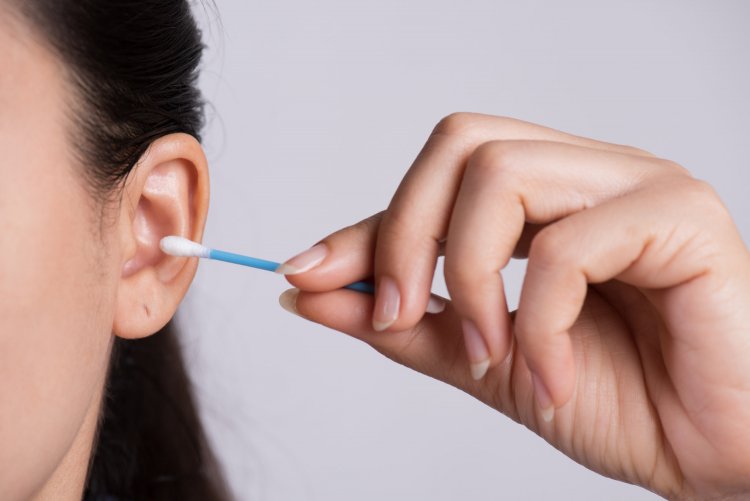Safe Earwax Removal: Dos and Don’ts for Healthy Ears
What is Earwax (Cerumen)? Earwax, or cerumen, is a yellowish, waxy substance produced by the ceruminous glands in the outer ear canal. It serves several critical functions:

Earwax Buildup: Causes, Symptoms, and Safe Removal Methods
Earwax, a natural substance produced by the ear canal, plays a vital role in ear health. However, excessive buildup can lead to discomfort and hearing problems.
Protection: Earwax traps dust, dirt, and other foreign particles, shielding the delicate inner ear.
Lubrication: It keeps the ear canal moist, preventing dryness and itching.
Antibacterial Properties: Earwax possesses antimicrobial properties that help fight infections within the ear canal.
Earwax typically exits the ear canal naturally due to jaw movement from talking and chewing, carrying debris and dead skin cells along with it.
Causes of Earwax Buildup
Several factors can contribute to earwax buildup, potentially leading to blockage or impaction:
- Overproduction of Earwax: Some individuals naturally produce more earwax, which can accumulate faster than it can be expelled.
- Narrow or Hairy Ear Canals: These anatomical variations can hinder the natural removal of earwax.
- Using Cotton Swabs or Earbuds: Inserting objects into the ear can push earwax deeper, causing impaction.
- Earplugs or Hearing Aids: Frequent use of these devices can obstruct the natural movement of earwax out of the ear, leading to buildup.
- Age: As we age, earwax tends to become drier and less mobile, increasing the risk of impaction.
- Genetic Factors: Some people may have a genetic predisposition to produce harder or drier earwax, which is more prone to causing blockages.
Symptoms of Earwax Buildup
Excessive earwax accumulation can cause a variety of symptoms, including:
- Hearing Loss: Blocked earwax can obstruct the ear canal, resulting in temporary hearing loss, often the most noticeable symptom.
- Earache: Impacted earwax can cause pain or a feeling of fullness in the ear.
- Tinnitus: Ringing, buzzing, or other noises in the ear can occur due to earwax impaction.
- Itchiness: The buildup can irritate the ear canal, causing itching.
- Dizziness: In some cases, excessive earwax can affect balance, leading to dizziness.
- Odor or Discharge: An unpleasant smell or fluid discharge from the ear can indicate an earwax blockage.
How to Clean Earwax Safely
Cleaning earwax requires care to avoid damaging the ear canal or eardrum. Here are some safe methods for earwax removal:
Over-the-Counter Ear Drops
- Softening Drops: These pharmacy-available drops help soften earwax, facilitating removal. They often contain ingredients like hydrogen peroxide, carbamide peroxide, saline, or mineral oil.
- Usage: Follow the instructions on the packaging. Typically, you will need to lie down with the affected ear facing up, apply the drops, and remain in that position for a few minutes.
Ear Irrigation
- Description: This method involves flushing the ear canal with water or saline solution to dislodge and remove earwax.
- Professional Help: It's generally safer to have a healthcare provider perform ear irrigation to avoid damaging the ear.
- At Home: If done at home, use an ear syringe filled with warm water and gently squirt it into the ear canal while tilting your head. Ensure the water drains out, taking the earwax with it.
Manual Removal
- Professional Removal: A healthcare provider can use specialized instruments, such as a curette or suction device, to safely remove earwax.
When to Seek Help
If you experience severe pain, hearing loss, or signs of infection, consult a healthcare professional.
Avoid Cotton Swabs
- Risk of Impaction: Using cotton swabs or other objects to clean the ear can push earwax deeper into the canal, leading to impaction and potential injury.
- Alternative: Use a damp cloth to clean the outer ear but avoid inserting anything into the ear canal.
Ear Candling: Not Recommended
Ear candling involves placing a lit, hollow candle into the ear canal. This method is not recommended by healthcare professionals due to the risk of burns, ear injury, and lack of evidence for its effectiveness.
Disclaimer: The information provided in this article is for educational purposes only and should not be considered medical advice. If you have any health concerns or are experiencing symptoms, it is important to consult with a healthcare professional, such as a doctor or clinic, for proper diagnosis and treatment. Always seek the advice of your doctor or other qualified health provider with any questions you may have regarding a medical condition. Do not disregard professional medical advice or delay in seeking it because of something you have read in this article.
#earwax #earhealth #hearing #cleaning #safety
What's Your Reaction?





















